Social media is a sure-fire way of engaging with your audience and can be an excellent marketing tool when used effectively. But when it comes to creating social content, it can sometimes be tricky to know exactly what to write and how to write it.
 There are several social media platforms on offer nowadays, and while the content you create for them may broadly overlap, each platform has a slightly different vibe and etiquette which should be reflected in what you choose to post.
There are several social media platforms on offer nowadays, and while the content you create for them may broadly overlap, each platform has a slightly different vibe and etiquette which should be reflected in what you choose to post.
Here at Sorted Communications, we have a presence on three platforms: Twitter, Facebook, and LinkedIn, and frequently share the same thing across all sites in slightly different ways.
Whenever you’re posting on social media, consider the following three points:
- What are you sharing?
- Why are you sharing it?
- Who will be reading it?
When posting to Twitter, remember that everything you post is potentially competing with hundreds of other posts at the same time (depending on how many other accounts your followers are following).
Make your content as engaging as possible. Include photos and graphics, and your tweet will take up more space on people’s timelines, making them more likely to stop and look at it as they scroll through their feed.
Hashtags are a great way to get your content seen by a wider audience, as they’ll make your tweets pop up in searches. When providing commentary on an event, for example, be sure to use the official event hashtag if there is one. If you’re posting a blog on a particularly hot topic, use a hashtag – there are accounts that monitor particular hashtags and will retweet any posts containing them. Websites like trackmyhashtag.com are a handy tool to use for this.
Remember that your audience on Twitter is not only limited to your followers. If people like or retweet your tweets, they’ll pop up in their followers’ timelines, meaning that your content has the potential to reach hundreds if not thousands of people (no pressure). Consider this when writing your content – make it open and approachable, without too much jargon.
And of course, be mindful that you’ve only got 280 characters per tweet, so use them well!
With Facebook’s algorithm, the more your followers interact with your posts, the more they’ll actually see them. Luckily, there are many ways for people to engage with your posts: you could encourage them to share their thoughts in the comments, or post opinion polls for them to use Facebook’s reactions feature.
On Facebook you can tailor your content slightly more towards your audience, as it’s probably only going to be seen by people who are already following you. What tone to strike depends on your business’ brand. Whether you want to take a formal or informal approach is up to you, but keep it consistent with your presence across other platforms.
As with Twitter, Facebook has a hashtag feature, so make sure to use them where appropriate. While you aren’t limited in terms of characters, try to avoid too many lengthy posts; they’re more difficult to make engaging, and you’re likely to fall into the trap of TL; DR (“too long; didn’t read”).
LinkedIn, unlike Twitter and Facebook, is a platform used solely for professional purposes. This doesn’t mean that your content has to be exclusively formal, but bear in mind that your content will be seen by other businesses and professionals and your audience is likely to be slightly different from your followers on Twitter or Facebook.
Where Twitter and Facebook are perhaps more suited to marketing your business, LinkedIn is geared around networking and interacting with like-minded professionals and businesses. It’s great for sharing useful resources and commentaries on current news stories and industry trends. Reflect this in what you post; if sharing someone else’s article, for example, post your thoughts on it and encourage your followers to interact and get a conversation going. Don’t shy away from commenting on others’ posts too if you feel you have some insight to add; increasing interaction is a good thing.
Social media can seem a little overwhelming, but increasingly, it’s the best way to build your brand and customer base. Just remember to make your content as engaging as possible and in keeping with your company ethos – look to the social media accounts of your favourite brands for inspiration. In a future blog, we’ll go into more detail about using graphics in your social media posts, as well as the wonders of Facebook and LinkedIn stories – so keep an eye out!
Have you found this useful? Why not sign up to our newsletter for more guidance, hints and tips and communications insights? Join our newsletter today.
